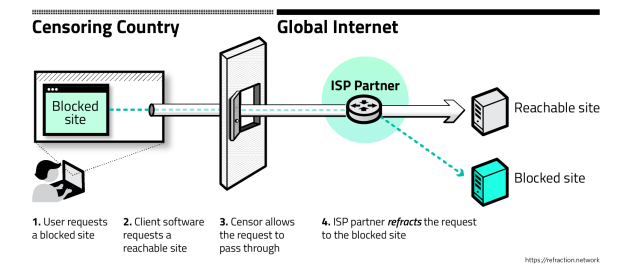What if circumventing internet censorship didn’t rely on some app or service provider that could eventually get blocked, but was instead built into the very core of the internet itself? After six years in development, three research groups including the University of Michigan have joined forces to conduct real-world tests of an experimental new technique called “refraction networking.” They call their particular implementation TapDance, and it’s designed to sit within the internet’s core.
The researchers deployed TapDance within two ISPs (Merit Network and the University of Colorado Boulder) for over a week this past spring to help more than 50,000 users around the world access the free and open internet—the first time such a test has been done outside the lab, and at such a large scale. The researchers announced the test in a paper presented at the annual USENIX Security conference, held in mid-August.

An explanation of how TapDance works. (https://refraction.network)
